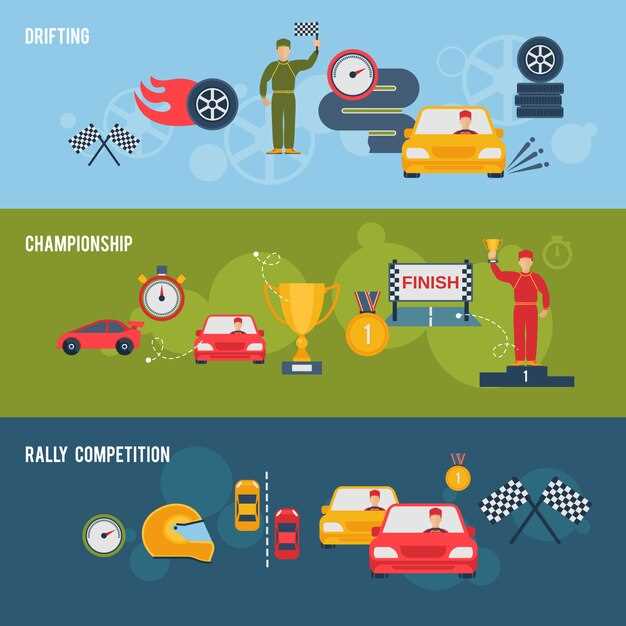
When it comes to buying a race car, understanding your specific goals is paramount. Whether you are aiming for competitive racing, casual track days, or simply a thrilling driving experience, the car you choose will directly impact your success and enjoyment. Each discipline in racing has unique requirements in terms of performance, handling, and reliability. Thus, it is essential to assess what you intend to achieve before making a purchase.
Different types of race cars offer various advantages and disadvantages. For instance, a Formula 1 car emphasizes speed and aerodynamics, while a GT car may prioritize a balance between performance and drivability. Additionally, the cost of ownership, including maintenance and potential upgrades, should be considered when selecting a race car that aligns with your aspirations. By identifying your primary objective, you can effectively narrow down the options available in the market.
In this guide, we will explore the factors to consider when selecting the right race car for your goals. From budget constraints to the specific type of racing you want to engage in, we will cover vital points that will facilitate an informed and satisfying purchasing decision. Understanding your requirements and the performance characteristics of various cars will enable you to make a choice that not only meets your expectations but also enhances your racing experience.
Assessing Your Racing Goals and Requirements
To effectively choose the right race car, it is crucial to first assess your racing goals and requirements. Define what you aim to achieve with your racing endeavors. Are you looking to participate in amateur competitions, or do you aspire to compete professionally? Understanding your objectives will help narrow down the types of cars suitable for your ambitions.
Next, consider your budget. This factor plays a significant role in determining the options available to you. Establish a financial range not only for purchasing a race car but also for ongoing expenses such as maintenance, modifications, and track fees. A clear budget will guide your decision-making process and ensure you select a car that aligns with your financial capabilities.
In addition to goals and budget, evaluate the specific requirements of your chosen racing discipline. Different types of racing, whether it be circuit racing, drag racing, or rallying, demand unique characteristics from a race car. Research the rules and regulations of your desired competition to ensure compliance with safety standards and performance criteria.
Lastly, consider your own skill level and experience. A beginner might benefit from a more forgiving car that is easier to handle, while an experienced driver may look for high-performance vehicles that offer greater speed and agility. Balancing your capabilities with your racing aspirations will help you select a car that enhances your driving experience and supports your journey in the racing world.
Evaluating Your Budget: Total Cost of Ownership

When considering buying a race car, it is essential to evaluate the total cost of ownership beyond the initial purchase price. This comprehensive approach helps you understand all financial commitments associated with your car, ensuring you stay within your budget.
Initial Purchase Price is the most obvious expense. However, it’s crucial to remember that cheaper cars may have hidden costs related to performance upgrades or maintenance requirements, which can affect your overall budget.
Next, consider Insurance Costs. Race cars often require specialized insurance coverage that can be significantly higher than standard car insurance. Be sure to obtain quotes specific to your chosen vehicle and ensure this fits comfortably within your overall financial plan.
Maintenance and Repairs are another essential factor. Performance vehicles may demand specialized parts and skilled labor, which can escalate costs. It’s wise to investigate the reliability of the car you’re considering and factor in regular maintenance schedules to your budget.
The Cost of Upgrades should also be included in your evaluation. Depending on your racing goals, you may want to invest in enhancements for speed, handling, or safety. Creating a budget for future upgrades can prevent financial strain later on.
Finally, consider Operational Costs such as fuel, tires, and track fees. High-performance race cars can be fuel inefficient, leading to higher spending over time. Additionally, different racing venues may charge entry fees, further impacting your budget.
Thoroughly assessing these aspects will provide a clearer picture of owning a race car. Ensure that you account for all potential expenses so that you make an informed decision aligned with your racing ambitions and financial capabilities.
Identifying Key Specifications for Performance and Safety

When selecting a race car, understanding the essential specifications is crucial for both performance and safety. These elements ultimately influence your racing experience, making it necessary to analyze them in relation to your goals and budget.
Engine Power: The engine is the heart of the vehicle, and its power output directly affects your race car’s performance. Look for specifications such as horsepower and torque figures. A higher horsepower rating can lead to faster acceleration, while torque is vital for navigating tight corners effectively.
Weight-to-Power Ratio: This ratio is determined by dividing the car’s weight by its power output. A lower weight-to-power ratio can enhance acceleration and speed, which is particularly advantageous in competitive racing. Consider how modifications may affect the overall weight and balance of your car within your budget constraints.
Suspension System: The suspension system is critical for handling and stability during races. A well-tuned suspension enhances responsiveness, providing better traction and control on various surfaces. Research adjustable suspension systems that offer flexibility for different race environments while ensuring safety.
Braking System: Effective braking is essential for safety and performance. Look for race cars equipped with high-performance brake systems that utilize larger rotors and calipers. Investigate the materials used, as ceramic or carbon brakes may offer superior heat resistance and stopping power but can significantly impact your budget.
Safety Features: Always prioritize safety specifications. Essential features include a roll cage, racing seats, and harnesses. Evaluate the car’s structural integrity and compliance with racing regulations. Investing in a well-designed safety system can protect you in high-speed situations and enhance your confidence on the track.
Tires: The right tires can dramatically affect grip, handling, and overall performance. Examine tire specifications such as tread patterns and compound types suitable for your racing conditions. Quality tires may require a notable budget allocation but are crucial for maintaining control during races.
In conclusion, carefully analyzing these key specifications allows you to choose a race car that aligns with your goals, performance expectations, and safety requirements. Striking a balance between performance features and safety essentials will maximize your racing experience while staying within your budget.












